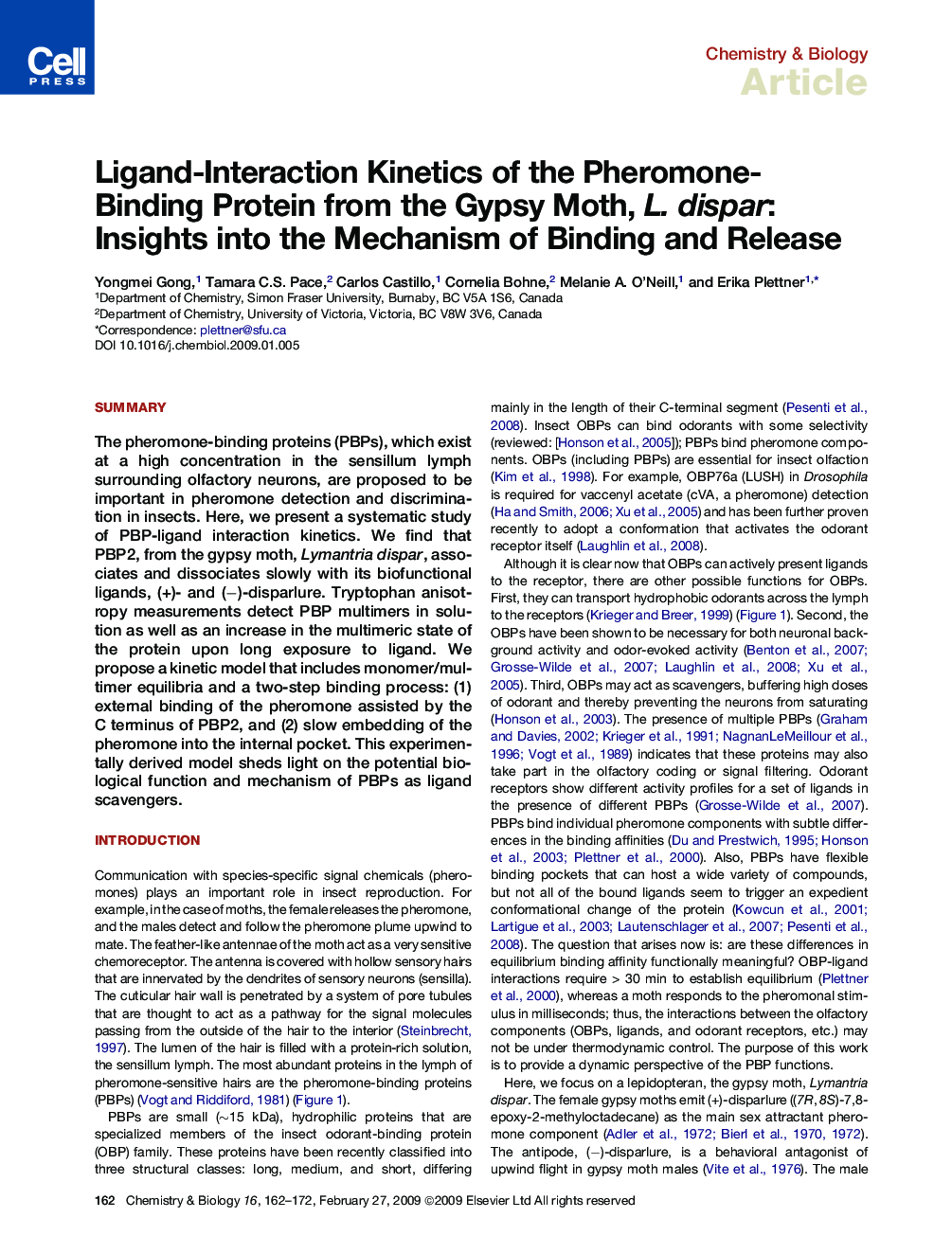| Article ID | Journal | Published Year | Pages | File Type |
|---|---|---|---|---|
| 1393959 | Chemistry & Biology | 2009 | 11 Pages |
SummaryThe pheromone-binding proteins (PBPs), which exist at a high concentration in the sensillum lymph surrounding olfactory neurons, are proposed to be important in pheromone detection and discrimination in insects. Here, we present a systematic study of PBP-ligand interaction kinetics. We find that PBP2, from the gypsy moth, Lymantria dispar, associates and dissociates slowly with its biofunctional ligands, (+)- and (−)-disparlure. Tryptophan anisotropy measurements detect PBP multimers in solution as well as an increase in the multimeric state of the protein upon long exposure to ligand. We propose a kinetic model that includes monomer/multimer equilibria and a two-step binding process: (1) external binding of the pheromone assisted by the C terminus of PBP2, and (2) slow embedding of the pheromone into the internal pocket. This experimentally derived model sheds light on the potential biological function and mechanism of PBPs as ligand scavengers.
